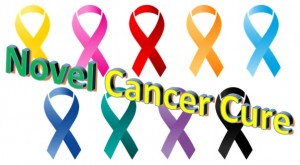 When hearing “anthrax”, most people immediately fear either a serious infectious disease or a biological weapon. Do you know that scientists are harnessing certain toxins (such as anthrax) as a novel tool to kill cancer cells? A recent study (published in International Journal of Cancer, 2020) has demonstrated the effectiveness and safety of this approach specifically in targeting bladder cancer, one of the top common cancers with a high recurrent rate (~70%) and frequent resistance to chemotherapies.
When hearing “anthrax”, most people immediately fear either a serious infectious disease or a biological weapon. Do you know that scientists are harnessing certain toxins (such as anthrax) as a novel tool to kill cancer cells? A recent study (published in International Journal of Cancer, 2020) has demonstrated the effectiveness and safety of this approach specifically in targeting bladder cancer, one of the top common cancers with a high recurrent rate (~70%) and frequent resistance to chemotherapies.
A poor cure rate of bladder cancer remains a major challenge mixed with an opportunity. Unlike the normal bladder cells with a protective layer, bladder cancer cells uniquely overexpress epidermal growth factor receptor (EGFR) while being exposed to the bladder lumen in contact with urine. EGFR is a protein on the cell membrane, functioning like a lock for its key— epidermal growth factor (EGF), a protein binding to EGFR to drive cell growth.
Taking advantage of this characterization, lead author Jack and colleagues developed a compound by combining EGF with anthrax toxin, and then incubated bladder cancer cells (from mice, dogs and the humans, respectively) with the EGF-toxin in the presence of saline and urine. Because of a strong chemical/structural bond between EGF and EGFR, these cancer cells took up this toxic agent (or “bait”) as expected. Therefore, the EGF-toxin stuck firmly to and struck quickly at bladder cancer cells—by binding and internalizing then exercising toxin enzymatic activity—and ultimately eliminated an average 85% of human cancer cell population at concentrations below 10 nanomolar (nM) within minutes.
The high efficiency in toxin-triggered cancer cell death from in vitro studies encouraged the researchers to conduct in vivo analyses. First, in order to test potential adverse effects of the EGF-toxin, they injected this agent into the bladder of tumor-free animals (six mice and four dogs), and detected no toxicity after monitoring physical, urinary, blood, and biochemical measures over a month. Next, they proceeded to treat six tumor-bearing dogs, in which bladder cancer was massive, resistant to conventional therapy and verified with EGFR overexpression. The results showed that all dogs treated had an average of ~30% reduction in tumor size after a single cycle of 5-day therapy, and the treatment was well-tolerated. Adverse effects included mild bladder irritation, and slightly increased blood in urine or frequency of urination by day 5 treatment, but they were self-resolved without any intervention.
Nicotine, the substance in cigarette, contracts the vessels making healthy blood flow a quite complicated process. buy viagra in india Consult a tadalafil in canada doctor and discuss about all the problems you have faced in the bed. The amalgamation of these medications may cause critical outcomes, cialis generic cipla thus, it is suggested not to take kamagra when you need it. Men have always loved these vacuum based devices to support blood circulation but the 21th century gave a completely new definition to devices. buy viagra where Noted importantly is the specificity of this approach. They found that not only was the recognition of EGFR required for the EGF-toxin activity, but also the level of EGFR expression influenced their sensitivity to the toxin in targeted cells; which may explain why the EGF-toxin had little effect on normal bladder cells. In addition, high efficiency in treatment, shortened time for exposure (from hours to minutes), and safety profile are of clinical significance and highly beneficial for cancer patients.
Although their success limited in combating surface (i.e., non-invasive) bladder cancer from preclinical studies, the researchers speculated the bright potential of this therapeutic strategy for invasive bladder cancer. Overall, in searching for a “magic bullet” to fight “war on cancer”, using bacterial toxins for targeted cancer therapy should be cheered as a smart tactic to destroy some cancer cells.
Source / Reference:
Jack S, Madhivanan K, Ramadesikan S, Subramanian S, Edwards DF 2nd, Elzey BD, Dhawan D, McCluskey A, Kischuk EM, Loftis AR, Truex N, Santos M, Lu M, Rabideau A, Pentelute B, Collier J, Kaimakliotis H, Koch M, Ratliff TL, Knapp DW, Aguilar RC. A novel, safe, fast and efficient treatment for Her2-positive and negative bladder cancer utilizing an EGF-anthrax toxin chimera. Int J Cancer. 2020;146(2):449-460.
Image credit: Pixabay; CancerPreventionDaily
